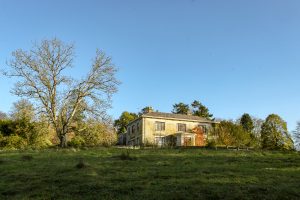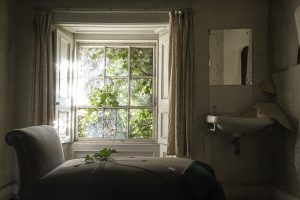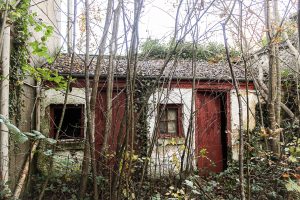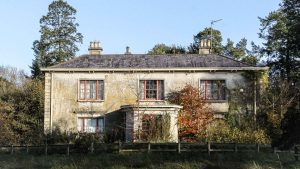There is an estate hidden right under the nose of Omagh, covered by the foliage of time and practically untouched for over a decade.
Located on the hill beside the newly-constructed Crevenagh houses, it’s a building that predates all that surround it.
The Crevenagh Estate was built in the 1820s by a man named Daniel Eccles Auchinleck, who was the Clerk of Peace in Tyrone.
The large two-storey property was constructed with wood that originated from their family plantations in Demerara in South America, now known as Guyana, as well as also incorporating Wyatt windows with a projecting porch.
Before entering the long, curved driveway to the main house, there is a small cottage-sized dwelling at the bottom of the hill, in which occupied the gatekeeper.
Not only is this where visitors were checked before being allowed to the estate, but the family of the gatekeeper would also live here.
Additionally on the estate was a small farm and a set of stables for horses.
Reportedly, when the house was in full bloom, the family prided themselves on their large garden full of vibrant flowers, maintained by the servants. These servants had their own quarters and living space in the rear of the building.
When Daniel Eccles Auchinleck passed away, his widowed wife maintained hold of the house until their eldest son, Major Henry Auchinleck, retired from military service in 1865 to take on its management.
Sadly, the death of Major Henry’s only son, Captain Daniel George Harold Auchinleck in the first year of World War One left the estate with no heir to manage the grounds.
So the house was later given back to the widowed wife until Lieutenant-Colonel Ralph Reginald Auchinleck Darling, the nephew of Major Henry, inherited the house after WWI.
Next in line was Captain Auchinleck’s eldest son, Lieutenant-Colonel Ralph Reginald Auchinleck Darling Jr, who fought in World War I and World War II as a commissioned officer in the Royal Inniskilling fusiliers from 1939 to 1943, until he was forced to retire due to ill-health.
Upon the death of Lieutenant-Colonel Auchinleck Jr in 1958, his son Gerald Ralph Auchinleck Darling inherited the house, and would be the last in the long line of military leaders to hold the family’s name on the grand country estate.
He too, like his fathers before him, held an extensive military career, beginning as an officer in the Royal Navy Reserve during World War II, moving onto piloting for the naval fleet and as a test pilot.
Though living in London, he visited the house frequently, as if it were his permanent home.
He held his family’s name with pride, and fondly recalled his childhood memories at the house.
By 1990, he became deputy lieutenant for Tyrone, and by 1993 he became high-sheriff.
He later died in 1996, resulting in a legacy that had finally met its end.
Gerald Ralph Auchinleck Darling’s wife sold the house in 2004 to a private investor, reportedly with plans to turn the grand two-storey mansion into a luxury hotel, however this has yet to come into fruition
To this day, the house lays dormant at the top of the hill, viewing over the Drumragh river.
The grass stands overgrown, and a large tree at the front of the house is a fitting symbol of the extensive family tree that once occupied the grounds.
It is difficult to speculate the future of the house, as its original wooden structure is starting to collapse in on itself, and the walls are thick with both green and black mould.
Though in it’s a desolate state, there is hope for the future for the historic house, as rumours of other developments swirl around the site.
And promisingly, over the last few years, the Crevenagh Properties housing project has seen the establishment of new two-storey houses built on former fields of the estate, which has brought blossoming new life to the fascinating historical grounds.
It has also been rumoured that an unknown company will turn the house into a luxury hotel, although this has not been confirmed, and no action has yet been taken.
Whatever the future may hold for this staple of Omagh’s history, it is important that we can preserve its heritage in some shape or form.












